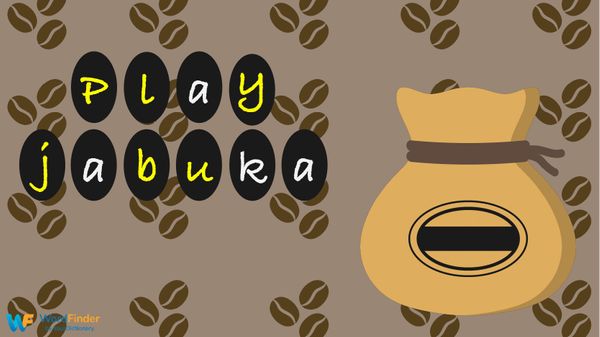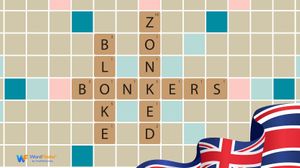Jabuka: A Freshly Brewed Spin on Word Games

Adapted from Getty Images
The Word on Jabuka
At first, Jabuka might seem similar to other letter tile games. As you play, its rules quickly reveal why that isn’t the case. Almost every letter tile—or beans, as they are called—has at least one letter printed on it... but some have more than one. Most importantly, a bean’s position relative to other beans determines its letter.
A bean might have an “m” on it, but if you turn the bean sideways, it instantly becomes an “e.” This is the key to playing Jabuka. You need to challenge the way you think about making words from letters if you want to win.
Who Might Love Jabuka
Jabuka is a game that anyone can play. Its ease or difficulty is entirely dependent on who is playing. As stated on the Jabuka rules page, the two-player game is for anyone ages eight to 108. That range makes it clear that if you can read, you can enjoy Jabuka. You can also play in two teams if there are more than two players.
The game can be fun for school-aged kids developing their vocabulary. It can also be fun for a party night among the adult word finder crowd. You can also do a mix of the two. Jabuka would be a great game for grandparents and grandchildren to play together, for instance.
How to Play Jabuka
The true mark of any great party game, Jabuka only has a few rules to learn before playing. None of the rules require you to spend more time memorizing them than actually playing the game.
Jabuka Twistable Alphabet
The first thing you need to do is familiarize yourself with Jabuka’s alphabet. Jabuka has four types of bean-shaped letter pieces. The game comes with 100 letter beans and eight blank beans.
Twisties: These beans may serve as one, two or even three letters, depending on the orientation of the bean. The letters on these beans are yellow.
Double letter twisties: These are the same as the regular Twisties, except they have two letters printed on them.
Non-twisties: These beans cannot be twisted to make new letters. The letters on these beans are white.
Blank beans: These beans are a lighter color than the other beans. They also have no letters printed on them. Blank beans can represent any letter, like blank tiles in Scrabble.
Spill the Beans
The game starts by taking the bean bag and flipping it over to “spill the beans” onto the playing area. The beans will be randomly face-up and face-down. Do not change their positions. Simply make sure that none of the beans are resting on top of each other.
Each player takes two blank beans. Place any remaining blank beans back in the bag and set the bag aside for the rest of the game.
Make Your Words
Once everyone has their beans, one of you can say, “Go.”
Now that the game has begun, you start making words. Study the pile of beans. When you see a possible word to spell from the face-up letters, shout the word out and grab the beans to spell that word. You can shout out and spell words whenever you want.
Take Your Opponents’ Words
Similar to creating words, you can steal an opponent’s word at any time. If you look at their word and see another word you can spell with the same beans, you can shout the change to that word and take their letter beans.
Example: If your opponent has the word “prod,” you can shout out “drop” and take their tiles to make that word.
Flip Beans Over for More Options
Flipping beans over is your third gameplay option. At any point in the game, you can turn to your opponent and ask, “Flip?” If they agree to flip, each of you flips two of the face-down beans over. Once they are flipped, you can check to see if you can create any new words with them.
How to Win a Jabuka Game
The game ends once someone makes or takes a word after flipping over the final bean. When they make or take that word, they shout, “Jabuka!” Everyone stops making and taking words at this point.
Count everyone’s beans to determine the winner. The player with the most beans at the end of the game wins. This is also when you check that everyone’s words are real and acceptable.
Settle a Tie
If both players have the same number of beans, there is a tie. To settle this, players engage in a short round with 10 face-down beans each. They use their beans to spell the longest word they can. The player with the longest word wins the game.
From Beans to Banana(grams)
Jabuka should be put on everyone’s short list of needed games. It’s fun to play and easy to learn. Those qualities are what you need to look for in any game you hope to turn into the high point of party night. If you need another game that fits those criteria, you should try out Bananagrams. Bananagrams is a rapid word game that anyone can quickly understand and enjoy.
Zac Pricener has been a content creator for the past eight years. He’s a bit of an all-around nerd, and he has a bad habit of working movie and TV show references into conversations whenever possible.



